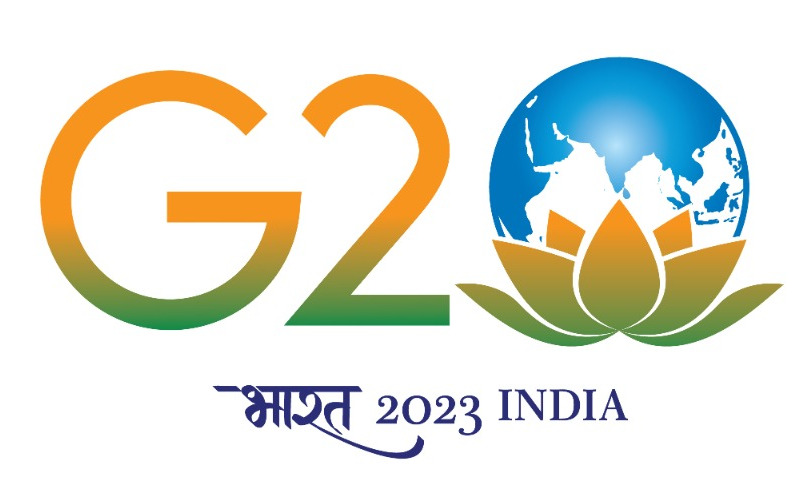Government of India’s Global Commitments
India is at the cusp of two significant transformations. The first is its demographic transformation. India will soon be the most populous country in the world – and will be home to one of the youngest populations in the world. The country is also home to a large population that lives below the poverty line. A rapid and equitable economic growth is critical to meet the growth and lifestyle aspirations of 1.4 billion people. The manufacturing sector will need to grow to supplement the impressive services sector economy and cater to the large population living off the agrarian economy. The second is its green transformation. India’s per capita energy use today is lower than the most nations, its use of materials such as iron is still modest, and its manufacturing sector is still relatively underdeveloped. However, as India grows, so will its GHG footprint. While India’s growth will need to factor in higher consumption levels across its population, it has a unique opportunity to leapfrog this journey through low/no emissions technologies.
Sustainable Development Goal
The 17 Goals of the 2030 Agenda for Sustainable Development, which was adopted by 193 nations in September 2015 at the UN Summit, officially came into force on the 1st of January 2016. While these goals are ambitious in nature, they have charted out a path for nations to achieve development that is fair, equitable, environment friendly and above all, inclusive in nature. Human and environmental rights underpin the foundation of the SDGs that demand robust and integrated actions, recognizing the role of different actors in the process. India has played an important role in shaping the Sustainable Development Goals (SDGs). This means India is committed to achieving the SDGs even before they were fully crystallized.
India’s Nationally Determined Contributions
India’s Nationally Determined Contributions (NDC) identifies the actions a national government intends to take under the UNFCCC climate deal that was agreed in Paris in December 2015. NDCs are, therefore, the basis of global emissions reduction commitments that will be included in the future climate agreement. INDCs refers both to developed and developing countries’ plans. In their INDCs, UNFCCC Parties are requested to outline the steps they are taking/will take to reduce emissions at national level. This reflects the commitments of countries who are responsible for around 96.4% of global emissions. The nature of commitments and the type of target for each country is varied. The 2015 NDC comprised of eight goals, three of these have quantitative targets to be achieved by 2030. These are:
- To reduce the emissions intensity of its GDP by 33 to 35 percent by 2030 from 2005 level;
- To achieve about 40 percent cumulative electric power installed capacity from non-fossil fuel based energy resources by 2030 with the help of transfer of technology and low cost international finance including from Green Climate Fund (GCF).
- To create an additional carbon sink of 2.5 to 3 billion tonnes of CO2 equivalent through additional forest and tree cover by 2030.
Updated India’s Nationally Determined Contributions
India has continued to demonstrate climate leadership and a firm commitment for achieving the clean energy transition. At COP26 in Glasgow, the Prime Minister of India announced the five nectar elements or Panchamrit—The Gift of Five Elixirs. The four targets to be achieved by the year 2030 included the following:
- Indian will have non-fossil energy capacity of 500 GW by 2030.
- India will meet 50% of its energy requirements from renewable energy by 2030.
- India will reduce the total projected carbon emissions by one billion tonnes from now onwards till 2030.
- By 2030, India will reduce the carbon intensity of its economy by 45%.
India also announced fifth target at COP26 to become a net-zero by 2070. Further, the updated NDC also put forward and propagate a healthy and sustainable way of living based on traditions and values of conservation and moderation, including through a mass movement for “LIFE” – ‘Lifestyle for Environment’ as a key to combating climate change. The decision on enhanced NDCs demonstrates India’s commitment at the highest level for decoupling of economic growth from greenhouse gas emissions.
Submission of Long Term Low Emission Development Strategy to UNFCCC
India submitted its Long-Term Low Emission Development Strategy to the United Nations Framework Convention on Climate Change (UNFCCC), during the 27th Conference of Parties (COP27), held at Sharm-el-Sheikh, Egypt during 6-18 November 2022. The salient features of the strategy are:
The focus will be on the rational utilization of national resources with due regard to energy security. The transitions from fossil fuels will be undertaken in a just, smooth, sustainable and all-inclusive manner.
- The National Hydrogen Mission launched in 2021 aims to make India a green hydrogen hub. The rapid expansion of green hydrogen production, increasing electrolyser manufacturing capacity in the country, and three-fold increase in nuclear capacity by 2032 are some of the other milestones that are envisaged alongside overall development of the power sector.
- Increased use of biofuels, especially ethanol blending in petrol, the drive to increase electric vehicle penetration, and the increased use of green hydrogen fuel are expected to drive the low carbon development of the transport sector. India aspires to maximise the use of electric vehicles, ethanol blending to reach 20% by 2025, and a strong modal shift to public transport for passenger and freight.
- While urbanisation will continue as a strong trend from our current relatively low base, future sustainable and climate resilient urban development will be driven by smart city initiatives, integrated planning of cities for mainstreaming adaptation and enhancing energy and resource efficiency, effective green building codes and rapid developments in innovative solid and liquid waste management.
- India’s industrial sector will continue on a strong growth path, in the perspective of ‘Aatmanirbhar Bharat’ and ‘Make in India’. Low carbon development transitions in the sector should not impact energy security, energy access and employment. The focus will be on improving energy efficiency by the Perform, Achieve and Trade (PAT) scheme, National Hydrogen Mission, high level of electrification in all relevant processes and activities, enhancing material efficiency and recycling leading to expansion of circular economy, and exploring options for hard-to-abate sectors, such as steel, cement, aluminium and others.
- India has a strong record of enhancing forest and tree cover in the last three decades alongside high economic growth. India’s forest fire incidence is well below global levels, while its forest and tree cover are a net sink absorbing 15% of CO2 emissions in 2016. India is on track to fulfilling its NDC commitment of 2.5 to 3 billion tonnes of additional carbon sequestration in forest and tree cover by 2030.
- The transition to low carbon development pathway will entail several costs pertaining to the development of new technologies, new infrastructure, and other transaction costs. While several estimates exist, varying across studies, they all fall generally in the range of trillions of dollars by 2050. Provision of climate finance by developed countries will play a very significant role and needs to be considerably enhanced, in the form of grants and concessional loans, ensuring scale, scope and speed, predominantly from public sources, in accordance with the principles of the UNFCCC.
Industrial Deep Decarbonisation Initiatives
The Clean Energy Ministerial Industrial Deep Decarbonisation Initiative (IDDI) is a global coalition of public and private organisations who are working to stimulate demand for low carbon industrial materials. In collaboration with national governments, IDDI works to standardise carbon assessments, establish ambitious public and private sector procurement targets, incentivise investment into low-carbon product development and design industry guidelines.
Coordinated by UNIDO, the IDDI is co-led by the UK and India and current members include Canada, Germany and United Arab Emirates (UAE). The initiative brings together a strong coalition of related initiatives and organizations including the Mission Possible Platform, the Leadership Group for the Industry Transition (LeadIT), the International Renewable Energy Agency (IRENA) and the World Bank to tackle carbon intensive construction materials such as steel and cement.
Within the next three years, IDDI expects to have encouraged a minimum of ten governments to make public procurement commitments for low-carbon steel and cement. An estimated 80 per cent of cement and 90 per cent of steel is produced in around ten key countries respectively. Therefore, the adoption of green public procurement commitments — even in just a handful of these countries — will make a great impact in terms of greenhouse gas emission reduction.
Leadership Group for Industry Transition
The Leadership Group for Industry Transition (LeadIT) brings together countries and companies that are committed to action to achieve the Paris Agreement. It was launched by the Governments of Sweden and India at the UN Climate Action Summit in September 2019 and is supported by the World Economic Forum. To accelerate industry transition, LeadIT fosters collaboration between public and private policymakers to enable the needed policy environment, finance flows, and exchange of best practices by:
- Convening and participating in high-level dialogues to set the international agenda to align on action for net-zero.
- Holding regular meetings between private and public decarbonization experts
- Support roadmapping processes with science based tools and workshops.
- Track plans and investments to decarbonize heavy industrial sectors.
- Carry out analysis that informs policymaking.



